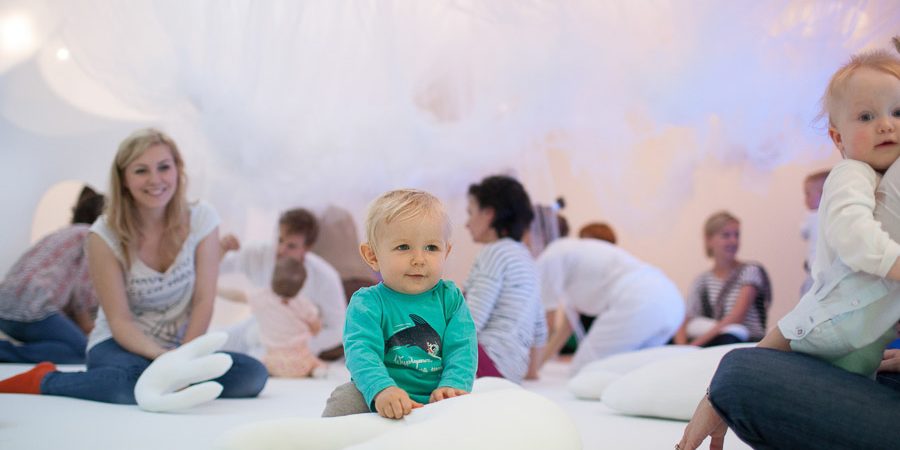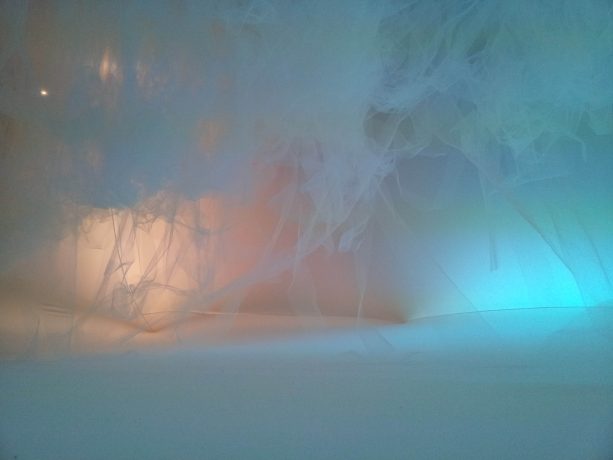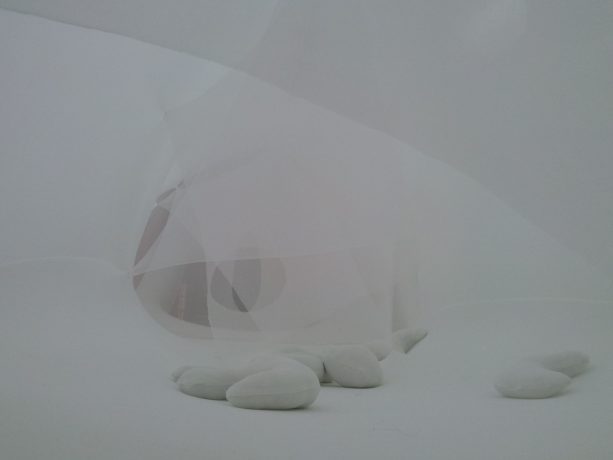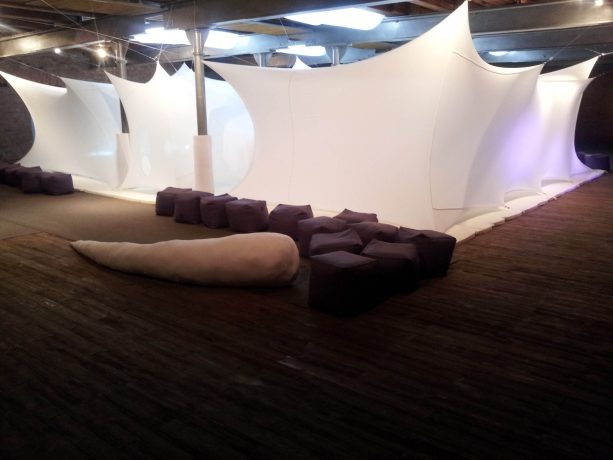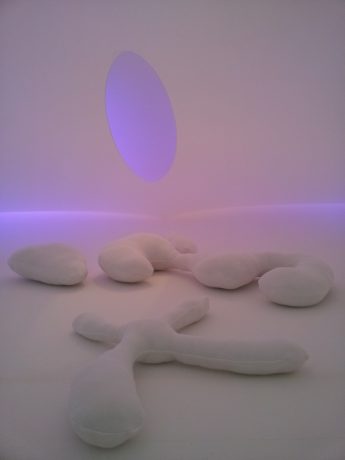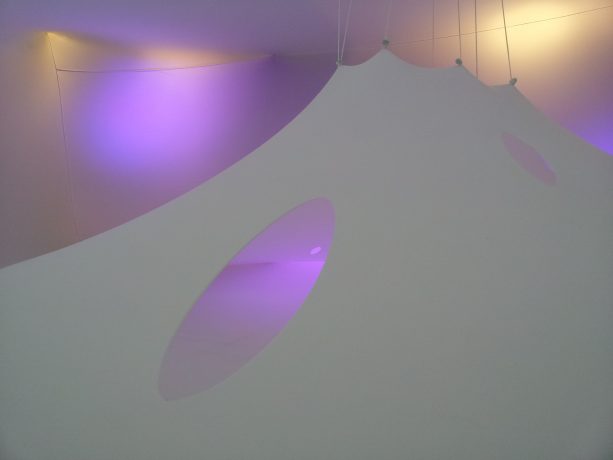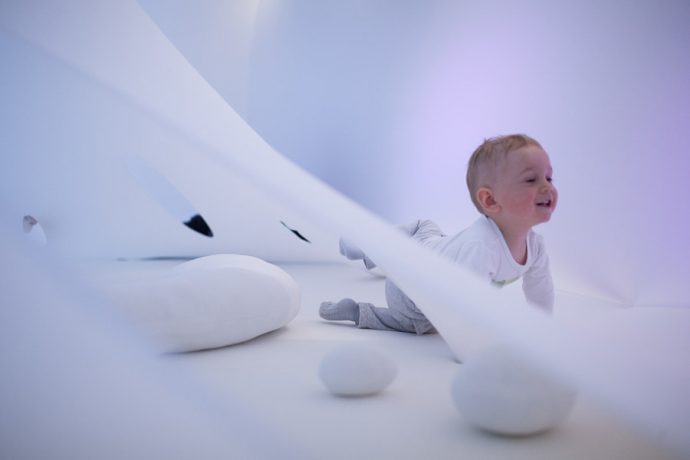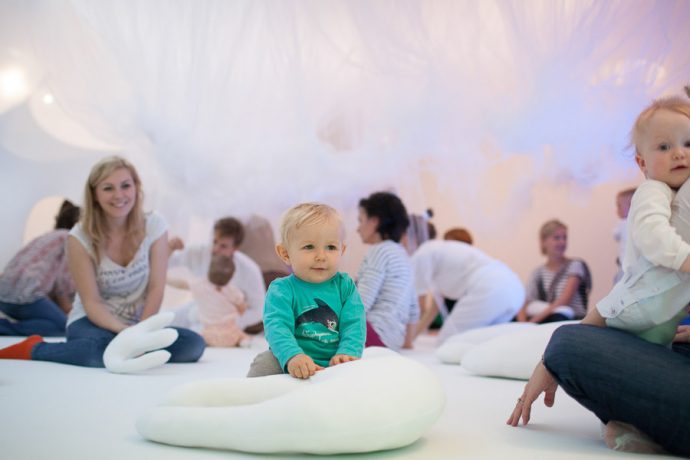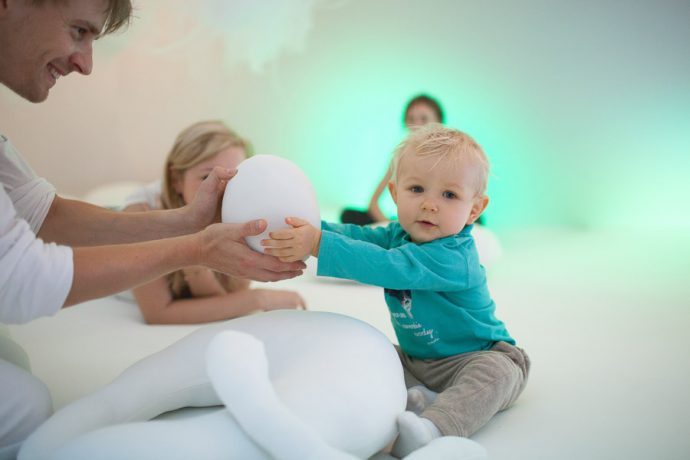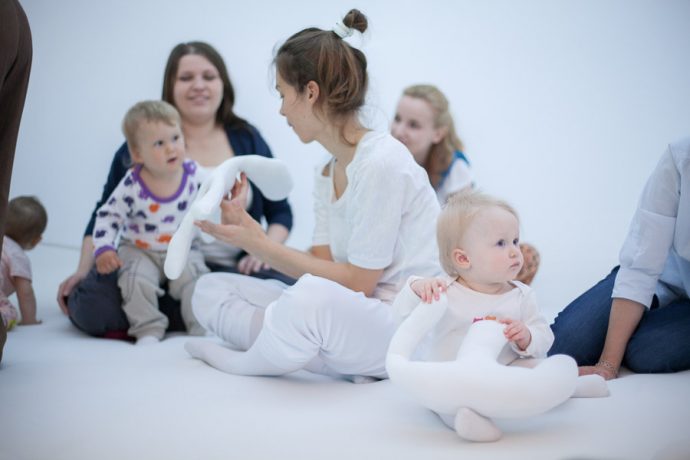Serbian choreographer Dalija Aćin Thelander has artistic interest in the field of art and children, and the relationships created between the two in a performance environment. Dalija graduated from Lujo Davičo Ballet School in Belgrade, after which she and presented at a number of prestigious international festivals, among them Impulstanz, Tanz im August, and the Urban Festival (Kiasma). She has worked with many international directors and artists, and has been affiliated with major festivals in Serbia, including BITEF, BELEF and Infant. She has created several dance performances for children and babies, her most well know called Baby Space.
Baby Space is an installation with elements of performance and choreography for babies from three months and their parents. It offers participants a unique sensory experience through tactile, auditory, and visual sensations. Baby Space aims to creating a natural environment where children and adults can feel safe and free. The space itself concentrates on delivering multidisciplinary experience to a very young audience. It combines animation, dance, music, theatre and storytelling. A lot of creative energy comes together to create an installation that children find both friendly and stimulating.
Baby Space was previously shown in Serbia, Poland and Denmark. In October 2015 this extraordinary project returned to the Art Stations Foundation in Poznan, Poland. In anticipation of this event, Museeum wanted to know what makes Dalija Aćin Thelander’s and her work so unique.
What concludes your interest in working with babies and toddlers?
My interest comes from the desire to create and propose to the youngest audience a non conventional encounter with art; to create environments rich in sensory stimuli which are activating the audience. I am also very interested in various types of audience involvement which can enhance multi-modal and affective experience. The reason why I am so interested in the exploration of the synergy of choreography and installation art is exactly because of its capacities for activation of the audience.
Do you think this particular audience interacts with art and within art spaces differently comparing to adults?
Children do not have, or have very little (depending on the age) preconception about art and therefore are very open and curious about encounters which are proposing something unusual and out of ordinary. They are not judgmental; instead they are enthusiastic about the new experiences and willing to go for it. Thats why it is important what kind of art and aesthetics children do encounter with and how it can influence their future encounters.
Where do you get the inspiration when creating something for such a young audience? Where does the idea of creating a dreamy and calm space come from?
comes from my curiosity and search for out of ordinary, peculiar artistic environments which propose to children and their adults a special and unusual conditions and contents for the both the encounter with arts and new encounters with each other.
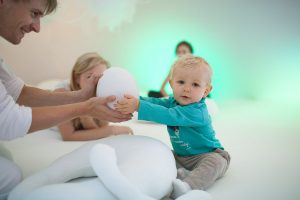
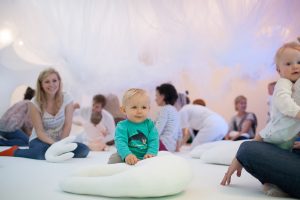
Have you been researching any studies on children’s psychology when creating the choreography?
Of course. I have been reading a lot about the latest research in developmental psychology and neuroscience as in the last thirty years developmental psychologists and neuroscientists made some ground breaking discoveries. They have found out that babies learn more, imagine more, care more, and experience more than we would ever thought possible. Therefore these scientific findings are extremely important and more than encouraging for all of us who advocate for the importance of the early years encounters with arts.
What was the most interesting feedback you got from babies’ parents and visitors during the Baby Space project?
The most interesting two were when we have presented the project in Japan this year. One was from the Mr. Asaya Fujita, president of ASSITEJ Japan and Vice President of ASSITEJ International, who said that one of the specific things he was amazed with was that there were no shadows in the space itself. Another one was from the person from the Japanese Mothers Association - she said that she was gradually relaxing trough both her baby's experience and her own, and eventually found her self laying, with a strong feeling 'like being deep in the ocean', feeling ultimate safety. Very valuable feedbacks, and they were many, came from the parents, right after the experience in Baby Space, who told me that their baby did some movement, or dared to take an action he or she never did before.
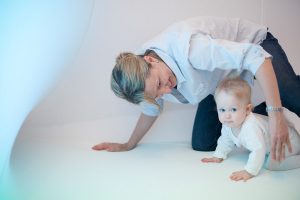
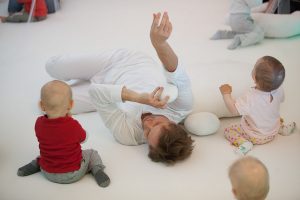
You mention that Baby Space is a very safe environment for children and parents to interact. Do you think there is a tendency for performances and participatory experiences in museums and other art spaces to create the atmosphere where a person can connect to himself?
There are variety of artistic works in the museums of contemporary art and galleries, mostly installation art works, which are aiming for the various extents for the audiences experiences. Some are interactive, some are participatory, or immersive and that is mostly with the aim that one connect to oneself, and also with the others, trough the experience which the artistic work proposes.
Are you interested in bringing your project to big museums or would you rather work with choreography of small intimate art spaces?
Even small and intimate spaces can be created within the big museums, so I would say that one does not excludes the other. It would be an interesting challenge to create intimacy and cosines in a big space.
Do you think it’s important to introduce more performative and participatory practices in museums and art spaces? How can it change the perception of art?
Interaction and immersion are more common while participatory practices, as being very delicate and debated a lot, are not so often found in the art spaces... I believe that the closer possible the audience can be to the artistic work - and this means that work involves them and gives them agency, the stronger and personal their experience of art gets to be. And this way of encountering with arts is what I personally value the most.
Are you planning to bring Baby Space to other countries?
Baby Space has been so far produced in Poland, Denmark and Serbia. Each of the producer is in charge on their own Baby Space and how much it will be presented locally or/and toured. Danish version, produced by Aabendans, theatre for children in Roskilde, is touring in Denmark, was presented in Sweden and will be presentad later this year in Norway. Baby Space from Serbia, produced by Gallery HUB 12 and Station Service for Contemporary Dance in Belgrade was touring in Japan. Polish Baby Space was made to be set in the Arts Station Foundation Gallery and to be occasionally presented in Poland. My aim is that this work is made as available as possible to babies and therefor I always propose to those who are interested in the project to have one custom made, for their own venue/production house, and have it on their programs as much as they want in order to make it optimally accessible for babies in their own countries.
